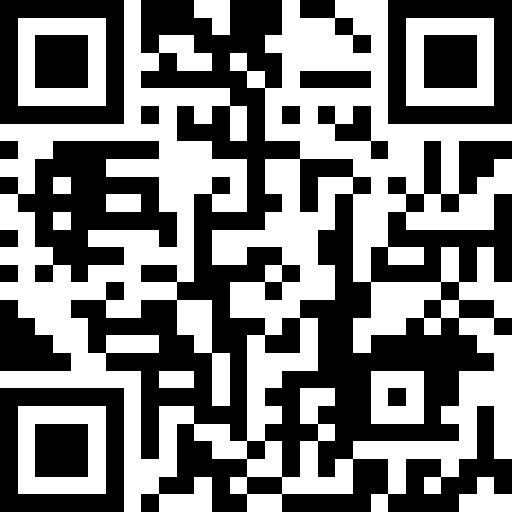Title Page
-
Audit date :
-
Audit reference :
-
Auditor :
-
Auditee :
Mandatory Audit Questions
-
Are procedures being audited meeting the requirements of the where applicable e.g., ISO 9001:2015 and customer-specific codes of practise?
-
Are documents accessible and readily available on the master register?
-
Are documents in use the correct revisions?
-
Have the relevant staff been trained on these documents?
-
Are training records up-to-date with the current documents?
-
Previous Audit Reviewed?
-
Any NC Raised in Previous Audit Closed?
Audit Specific Questions
-
Does the organization ensure that all related activities take place under controlled conditions
-
Evidence :
-
Does the organization plan in advance for how they will manufacture their product or deliver their service
-
Evidence :
-
Are resources and documents necessary to meet product requirements available
-
Evidence :
-
Are clear, concise and detailed work instructions that detail standard practice for performing tasks documented, correct & available
-
Evidence :
-
Are quality requirements defined e.g., tolerances, surface finish, drawings, specifications
-
Evidence :
-
Are monitoring and/or inspection activities in place to ensure product will meet the requirements
-
Evidence :
-
Are records of evidence retained – sample check
-
Evidence :
-
Are testing methods and procedures defined and documented, including respective acceptance criteria
-
Evidence :
-
Is there evidence that operational personnel are carrying out the process and production plans as per instructions and in the sequence presented to them
-
Evidence :
-
Are In-Process and Final Inspection steps inspection plans in place for quality control verification
-
Evidence :
-
Are operators aware to stop work if they identify any discrepancies in product
-
Evidence :
-
Is inspection, test and monitoring activity recorded
-
Evidence :
-
Has the organisation a process for identifying & controlling hazards & tasks such as risk analysis studies of key manufacturing processes
-
Evidence :
-
Where required has the organisation established customer defined criteria for control or monitoring of quality
-
Evidence :
-
Is equipment maintained in a manner consistent with contract/customer requirements and business practices
-
Evidence :
-
Is material handling conducted in a manner consistent with contract/customer requirements and sound business practices
-
Evidence :
-
Is the production system capable of managing all phases of manufacturing and service delivery from scheduling of customer needs, to the delivery of finished goods
-
Evidence :
-
Is the purchasing control system capable of managing all phases of manufacturing and service delivery from scheduling of customer needs, to the delivery of finished goods
-
Evidence :
-
Product and/or component purchases verified as approved – sample check
-
Evidence :
-
Is suitable production facilities, equipment, inspection and servicing capabilities available to achieve contract/customer requirements
-
Evidence :
-
Are environmental factors such as lighting, housekeeping, contamination, handling equipment and temperature managed in such a way as to comply with customer and regulatory requirements?
-
Evidence :
-
Are conditions such as utilities and supplies including water, compressed air, electricity and chemical products controlled
-
Evidence :
-
Has the organization established effective arrangements for providing the customer with product information, a means of handling inquiries and orders
-
Evidence :
-
Has the organization established effective method for handling customer comments that includes both compliments and complaints
-
Evidence :
-
Has the organisation develop a process to control communications with customers & is this implemented
-
Evidence :
-
Are records of customer communication maintained
-
Evidence :
-
Has the organization implemented a process to determine the requirements for the products and services that it intends to offer to customers
-
Evidence :
-
Does the process make sure that however an order is accepted that all the requirements for that order are determined
-
Evidence :
-
Is there evidence that a review of customer requirements is conducted before order acceptance
-
Evidence :
-
Once received does the organization review the requirements
-
Evidence :
-
Does the review include a contract review checklist that includes 1) Technical data; Specifications and standards; Drawings. 2) Understanding of customer requirements 3) Review of related standards 4) Unclear or ambiguous requirements are resolved 5) Feasibility has been determined 6) Differences between the contract and quote are resolved 7) Methods of communicating with the customer are defined 8) Requirements that are not stated by the customer are defined
-
Evidence :
-
Where customer does not provide their requirements in writing, how does the organisation confirm requirements before they are accepted
-
Evidence :
-
Has the organisation determined how review of customer requirements with regard to internet sales is achieved.
-
Evidence :
-
Where review is by product information provided in catalogues and advertising material is there evidence that these are review & kept up to date
-
Evidence :
-
Has the organization determined the arrangements for the retention of documented information relating to customer requirements
-
Evidence :
-
Does the organisation hold design control on any products provided?
-
Evidence :
-
Are procedures established and maintained to control all design stages of products?
-
Evidence :
-
Do the procedures have a requirement for:1. Some form of design plan for each new product, indicating Assignment of responsibilities and authorities of the key staff, design manager/team leader, designers and the interface between different groups working on the design etc? <br>2. A design programmes <br>3. Design risk analysis and a requirement to document the risk criteria<br>4. Inclusion of Design inputs [customer requirements, industry code of practice etc]<br>5. Inclusion of Design outputs that meet input requirements (checklists, authorization to proceed, customer acceptance, product certification etc);<br>6. Consideration for product packaging and labelling<br>7. Methods/rules for design checking and approval of design documents/outputs, verification <br>8. Control of design changes<br>9. Design changes<br>10. Design document data handling and archiving<br>11. Requirement on when to perform re-verification and re-validation<br>
-
Evidence :
-
Is there evidence of design reviews occurring? Is this documented
-
Evidence :
-
Is there evidence of design validation, (performed under defined operating conditions)
-
Evidence :
-
Is there a defined process for design transfer/release to production. Is this documented
-
Evidence :
-
Is there evidence that training has been undertaken, training material updated
-
Evidence :
-
Select a product which is in production and verify the following:1. There is an overall design plan documented which meets the requirements above<br>2. The design programme has all tasks indicated as complete<br>3. Scope of the design is documented<br>4. The inputs are listed, include regulatory requirements and customer requirements if applicable and are adequate and not conflicting.<br>5. Was acceptance criteria established and documented prior to the performance verification activities<br>6. Design outputs, drawings, calculations etc have all been checked and approved by suitable staff as required by the design plan/procedures.<br>7. Levels of control required or implied by interested parties (customers, regulators, end users etc.) e.g. customer acceptance, safety checks, product certification <br>8. Design reviews have been held and documented, all relevant staff (ones involved in the stage being reviewed) have attended the review<br>9. The review record clearly indicates what exactly was being reviewed and the outcome<br>10. Actions have been assigned to attendees, verify that these were followed up on subsequent reviews.<br>11. Design validation: Production of prototypes, trial production runs, demonstrations, verify that the prototype products were tested to the design specifications, regulatory requirements and functionality.<br>12. Verify that selected validation results have been applied to the design and where appropriate new prototype or production runs have been carried out<br>13. A risk analysis has been carried out at all appropriate stages, under normal and fault conditions. and recorded<br>
-
Evidence :
-
Audit the design outputs as follows: -1. Take a design detail from a drawing, e.g., wall thickness and check the reasoning for it, e.g., Calculations, Regulatory, Specification etc or other input.<br>2. Select some details from a code/standard, specification, customer supplied requirement and verify that it has been incorporated into a drawing detail.<br>
-
Evidence :
-
Is there a procedure or established system for Engineering Changes?
-
Evidence :
-
Find a product which has been revised (design change) and verify the following: -1. Is it appropriately approved <br>2. Is the impact of the change clearly documented, does it apply only to new production runs or do products in stores, shipping or products already shipped. <br>3. Is the scope of the change clearly documented, what documents/data are affected, consider drawings, specifications, control programs for production machines, jigs, tooling etc. Verify that the change has actually been incorporated into a sample of these.<br>4. Only approved specifications are used for manufacture and production<br>5. Is the effectivity dates of the engineering change documented<br>6. Was there a review of the possible need to revalidate the design, or to resubmit for regulatory compliance<br>7. Were all impacted departments involved in the generation/approval of the change<br>8. Major changes evaluated by any affected stakeholders e.g. customer, regulatory etc<br>
-
Evidence :
-
Do records for document / drawing changes include prior to use:1. A description of the change <br>2. Identification of the affected documents, <br>3. Signatures of the approving individual(s) or authorisation <br>4. Approval date<br>
-
Evidence :
-
Is there a notification system to communicate the implementation of an engineering change to all interested parties
-
Evidence :
-
For each product type is the following available & easily retrievable1. Product specifications including appropriate drawings<br>2. Composition/ formulation (where required in the case of SMC)<br>3. Production process specifications including the appropriate equipment, production methods, production procedures, and production environment specifications (if applicable)<br>4. Packaging and labelling specifications, including methods and processes used?<br>5. Installation, maintenance and servicing procedures and methods (where applicable)<br>
-
Evidence :
-
Is there a procedure that details how suppliers of products and services are controlled to ensure their products and services conform to specified purchase requirements
-
Evidence :
-
Is the selection criteria for potential suppliers & the subsequent decision rationale for approval of suppliers documented and authorized.
-
Evidence :
-
Is the scope, extent and criteria for evaluating suppliers defined & documented
-
Evidence :
-
Is there evidence that evaluation & approval of each supplier is completed prior to proceeding with the supplier approval.
-
Evidence :
-
Does the supplier evaluation determine if each supplier is capable of meeting quality, delivery, and performance requirements
-
Evidence :
-
Is suppliers’ overall performance rated & the minimum performance threshold or benchmark assigned
-
Evidence :
-
Are records of supplier evaluations and the related actions retained
-
Evidence :
-
Have approved suppliers satisfactorily demonstrated their ability to meet your business's requirements
-
Evidence :
-
Once supplier is acceptable, what process is in place to added supplier to the approved supplier list
-
Evidence :
-
Is the responsibility for supplier approval documented
-
Evidence :
-
Does the businesses periodically communicate monitoring results to their suppliers as appropriate
-
Evidence :
-
Is documented information that defines the characteristics of the product or service is available
-
Evidence :
-
Is documented information/ acceptance criteria that defines the activities that need to be performed to produce the product or deliver the service available
-
Evidence :
-
Does monitoring and measurement take place at appropriate points in the production process to ensure that both the processes themselves and the process outputs meet the organization’s acceptance criteria;
-
Evidence :
-
Is process environment and infrastructure suitable to deliver the expected outcome
-
Evidence :
-
Are product and service release, delivery and post-delivery activities implemented
-
Evidence :
-
Is suitable monitoring and measurement resources available where applicable
-
Evidence :
-
Area Personnel competent and, where necessary, appropriately qualified;
-
Evidence :
-
For processes where the results cannot be verified by monitoring or measurement has the process itself been initially validated and then periodically re-evaluated;
-
Evidence :
-
Are there up-to-date work instructions, specifications, drawings available
-
Evidence :
-
Area work instructions, specifications, drawings correct & is there evidence they are being followed
-
Evidence :
-
Is equipment available and adequate for the manufacture of products to meet specifications
-
Evidence :
-
Is there evidence that equipment is maintained periodically
-
Evidence :
-
Are maintenance activities performed, documented, by whom and when
-
Evidence :
-
Where traceability is a requirement is a process in place for the identification and traceability of outputs
-
Evidence :
-
Where traceability is a requirement is the organisation recording the unique identity of the product throughout the production process to ensure that only products that have passed the required inspections and tests are utilised.
-
Evidence :
-
Is the evidence that the traceability system is tested at a defined frequency and results retained
-
Evidence :
-
Where required or identified by the customer raw materials will be identifiable & traceability through the system e, g VI
-
Evidence :
-
Has the organisation established the identity and status of customer supplied product, materials, or tools
-
Evidence :
-
Has the organisation established a process to protect customer property
-
Evidence :
-
Are employees aware to exercise care when handling any customer property such as any products supplied by the customer, customer materials, or customer tools
-
Evidence :
-
Is there a process to notify the customer where customer property is lost or damaged & is this recorded
-
Evidence :
-
Has the organisation taken adequate measures to protect and preserve the product during internal processing and delivery to the intended destination
-
Evidence :
-
Area products properly identified to prevent mixing with other orders
-
Evidence :
-
Are suitable handling methods implemented throughout the processes.
-
Evidence :
-
Is product labelling and marking of shipped products sufficient to enable adequate identification and traceability back through the QMS
-
Evidence :
-
Is there evidence the labelling integrity is maintained and remains affixed throughout the shipping process
-
Evidence :
-
Has the organisation establish the packaging needed to preserve product integrity
-
Evidence :
-
Is product stored in a manner to safe guard product
-
Evidence :
-
Are raw materials, in-process materials, inspected product, nonconforming product and product ready for shipping identified with its status and protected from any unintended alteration
-
Evidence :
-
Are there post-delivery activities associated with the products and services provided – warranty, maintenance etc
-
Evidence :
-
Is there evidence available to show how the organisation meets these requirements
-
Evidence :
-
Has the organization implemented a process to control unplanned changes after formal approval of product information (eg. changes to customer orders)
-
Evidence :
-
Is the impact of the change evaluated to determine its affects to work in process or products already delivered
-
Evidence :
-
Was the change approved prior to implementation by the customer, customer, statutory or regulatory authority
-
Evidence :
-
Does retained documented information indicate the source of change and information on necessary actions and approvals
-
Evidence :
-
Has the organisation identified how conformity of product is established prior to release [established planned arrangements]
-
Evidence :
-
Do planned arrangements include monitoring & measuring criteria
-
Evidence :
-
Are records maintained to provide evidence of conformity of product prior to release
-
Evidence :
-
Are records maintained indicating the person(s) authorizing the release of products.
-
Evidence :
-
Where no planning arrangements are in place for product release or service delivery, this must be approved by relevant authority and by the customer as appropriate
-
Evidence :
-
Are records retained to provide evidence that acceptance criteria have been met
-
Evidence :
-
Do records ensure traceability to the person(s) authorizing the release such as name, authorized signatories, user identification, stamp impression etc
-
Evidence :
-
Is there a documented procedure which details how nonconforming outputs, including products and services, are identified, captured, rectified & analysed?
-
Evidence :
-
Is procedure still valid and up to date?
-
Evidence :
-
Does this procedure detail how the site evaluates the need for actions to prevent recurrence of the non-conformance? e.g., root cause analysis.
-
Evidence :
-
Does the procedure detail how immediate corrections are made?
-
Evidence :
-
Does the procedure detail when corrective actions are required and how they are triggered (e.g. through non-conforming tests, customer complaints, internal or external audits, management reviews, general observations etc.)?
-
Evidence :
-
Does the procedure include who decides to apply or not apply the corrective action within the company?
-
Evidence :
-
Does the procedure include detail on return or suspension of product delivery
-
Evidence :
-
Are products visibly identified as non-conforming, if so how?
-
Evidence :
-
To what standards do operatives work to identify if a product is conforming or nonconforming?
-
Evidence :
-
Are products clearly identified as non-conforming on the manufacturing line?
-
Evidence :
-
Is this mechanism robust enough to prevent non-conforming product from being released to customers?
-
Evidence :
-
Is the reason for non-conformity being investigated?
-
Evidence :
-
Has/should the risk register have been updated due to the non-conforming issue?
-
Evidence :
-
Is segregation of non-conforming items taking place and is there an allocated area?
-
Evidence :
-
How are non-conformances logged?
-
Evidence :
-
Does this log detail all non-conformance types (e.g., identified through internal/external audits, compliance audits, in-house or external product testing, management reviews, general observations etc.)?
-
Evidence :
-
Does the procedure state how non-conforming items are rectified?
-
Evidence :
-
Are scrap items being clearly identified and segregated? Is this documented in the procedure?
-
Evidence :
-
Are concessions in use and is the form valid and up to date?
-
Evidence :
-
Is there a process for customer returns?
-
Evidence :
-
Is this in place & followed?
-
Evidence :
-
Is there a procedure for rework? Who is authorised to permit reworking activities?
-
Evidence :
-
Is there a repair procedure? Who is authorised to permit repair activities & release?
-
Evidence :
-
How are repair activities controlled?
-
Evidence :
Opportunity For Improvement
-
Number of OFI raised :
-
Details
-
Have the OFI details been added to HubSpot
Non-conformance
-
Number of Non-conformances raised :
-
Details
-
Have the Non-conformance details been added to HubSpot













